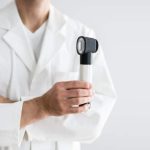The conversation about the importance of skincare continues to evolve. Prioritizing skin exfoliation is one of the best ways to achieve smooth and healthy skin.
Even if you understand the value of having a skincare routine, it can be difficult to know where to start. Skin is the largest organ of your body, and taking care of it properly involves layering skin care products, including sunscreen, moisturizers, cleansers, serums and exfoliants.
To make it simple for you, Columbia Skin Clinic outlines how to exfoliate your skin. Whether using DIY products or enlisting the help of professional services, skin exfoliation should be part of your routine.
What is skin exfoliation?
Your skin has multiple layers. The layer most people think of is the epidermis. Exfoliating helps treat the top layer of the epidermis, the stratum corneum, which is a protective layer of skin.
The stratum corneum consists of 10 to 30 layers of dead skin cells, so dermatologists may suggest you exfoliate as part of your skincare regime.
While these dead skin cells do come off naturally and are replaced by new cells, exfoliating helps remove the dead skin cells quicker than the natural process.
Benefits of exfoliating include:
- Brighter and improved-looking skin
- Unclogged pores
- Fewer acne breakouts
- Increased collagen production
Even with these benefits, it is important not to overdo skin exfoliation. Doing it too often can inflame your skin and cause redness and irritation.
Anyone can begin exfoliating their skin during their teenage years. The frequency might decrease with age as skin thins and the cell replacement cycle slows down.
How to exfoliate for your skin type
It is generally recommended to exfoliate once or twice weekly. However, the frequency of exfoliation will depend on your age, skin type and the type of exfoliating treatment you use.
Scenario: Patient No. 1 is 45 years old, and her doctor instructs her to exfoliate her skin twice a week. However, the same doctor tells Patient No. 2, a 28-year-old man, to exfoliate four times weekly. Why? Because Patient No. 1 has a combination skin type and Patient No. 2 has oily skin that can benefit from exfoliating more often.
Knowing your skin type and skin tone is the first step to properly exfoliating. The guide below highlights how often to exfoliate for your skin type:
- Normal to combination: Two times per week
- Sensitive skin: Zero to one time per week
- Oily skin: Up to four times per week
- Dry skin: One to two times per week
Physical methods for full-body exfoliation include body scrubs, brushes or loofas and lukewarm water. Gently scrub the skin in a small circular motion.
Chemical exfoliation includes products like serums, face masks and peels that are applied and left on the skin for a period of time before being removed.
Because exfoliating can dry your skin, be sure to put on moisturizer afterward. Exfoliating safely without damaging skin typically works best at night, but if you choose to exfoliate in the morning, applying sunscreen afterward is necessary.
While it is possible to exfoliate at home, it is optimal to get an exfoliating treatment at a dermatologist’s office. Professional treatments often provide better, long-term results and work at a deeper level.
Types of professional skin exfoliation treatments
If you’re interested in seeking a professional exfoliation treatment, a dermatologist can help recommend what is right for you. Physical and chemical exfoliating treatments can give your skin a healthy look. Various exfoliation methods remove damaged skin at a deeper level, with services like laser resurfacing.
Microdermabrasion is a non-invasive exfoliating service that uses a handheld device to remove deep layers of dead skin cells. It can be used on the neck, chest, back, arms and hands. Columbia Skin Clinic offers DiamondTome microdermabrasion to help reduce scarring, sun damage, and pore size.
Chemical peels can vary in type. Classification depends on how many layers of skin are affected during the process. Columbia Skin Clinic provides clients with micro and light peels for superficial results and a TCA peel that targets deeper age spots and sun damage. For a professionally applied chemical peel, a chemical solution is applied to the skin to remove dead skin cells. Common peels can incorporate Alpha-hydroxy acids (AHAs), Beta-hydroxy acids (BHAs), and trichloroacetic 30% acid.
Laser resurfacing is another popular exfoliating treatment that is offered by dermatologists. The process uses various types of lasers to target specific areas of the skin that present concern, helping to correct scarring, sun damage, aging and more.
For the best results, professional exfoliating treatments may require follow-up or future maintenance appointments.
If these options do not seem right for you, aesthetic services can also help improve skin through various types of dermaplaning and microdermabrasion facials.
Fun fact: While all resurfacing treatments are exfoliating treatments, not every type of exfoliating treatment can count as resurfacing.
DIY exfoliation
If you don’t want to pursue professional exfoliation treatments, there are easy ways to exfoliate your skin at home using a range of dermatologist-recommended skin care products.
For DYI skin exfoliation, consider using:
- Exfoliating scrubs
- Loofahs, brushes, sponges or washcloths
- Renewal facial pads and peels
- Cleansers, serums and masks with AHAs or BHAs
- Exfoliating body wash
- Toner
When starting DIY exfoliation, you should introduce gentle products slowly to avoid irritating the skin.
Make an appointment for an exfoliation treatment
Our dermatology practice has locations in Columbia, Irmo, Lexington and Camden. The board-certified dermatologists at Columbia Skin Clinic are here to help you achieve your skincare goals.
To decide what skin exfoliation or resurfacing treatment is right for you, contact Columbia Skin Clinic today and schedule a consultation.






